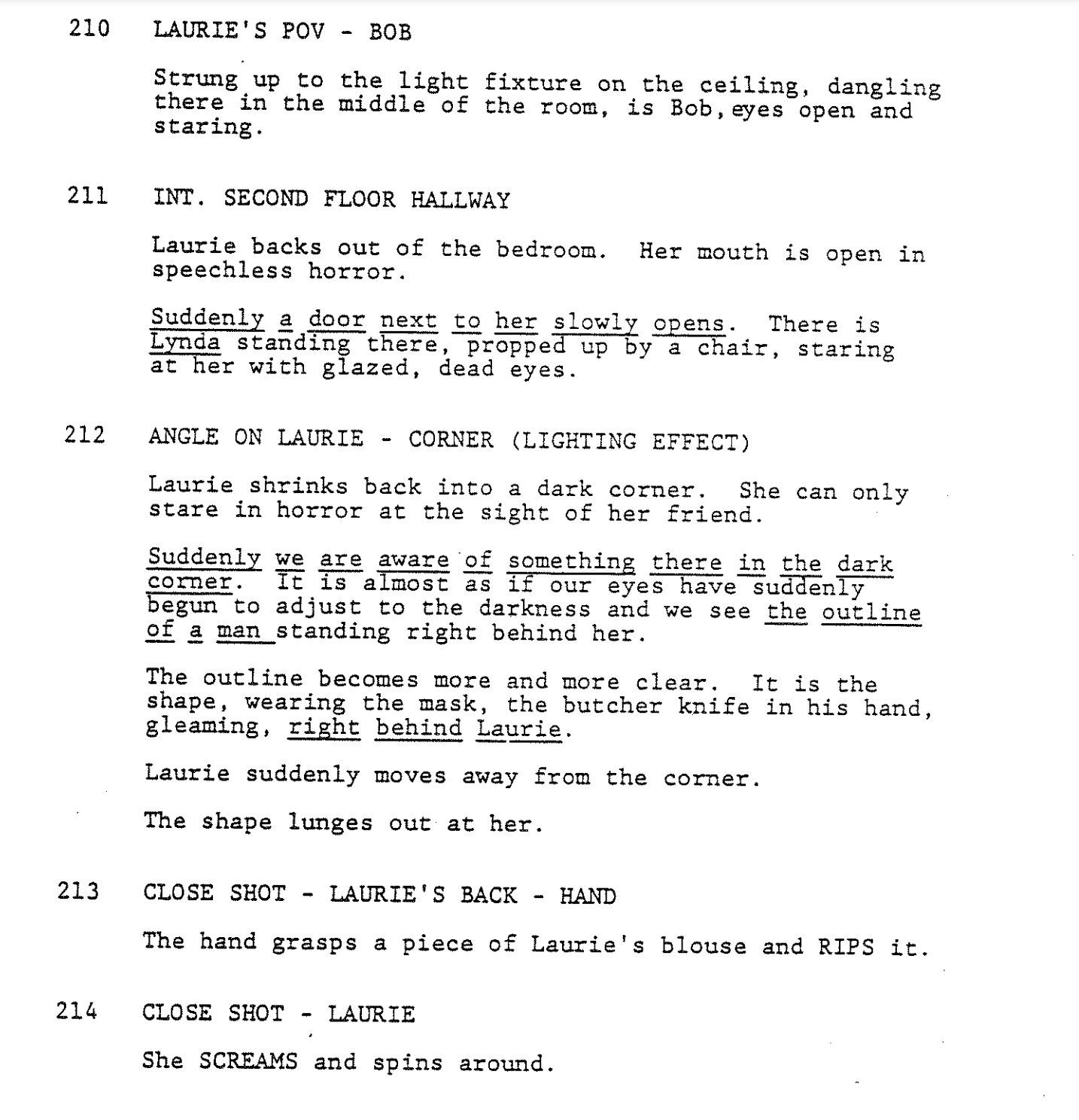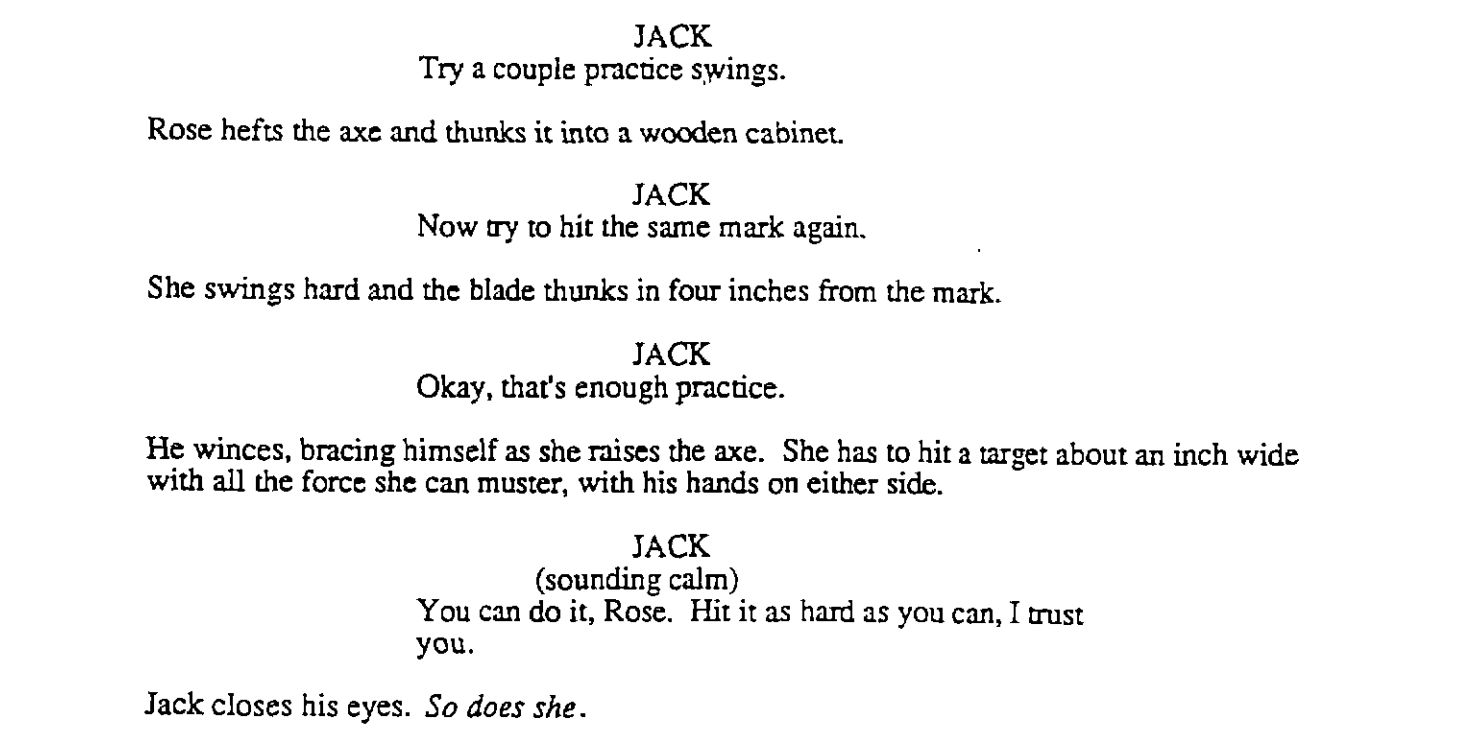WRITING YOUR SCREENPLAY WHILE SOCIAL DISTANCING: SUSPENSE
Most of us know it well — the feeling that something TERRIBLE lurks around the corner.
We dread the worst possible outcome in a given situation. Suddenly we’re swimming in adrenaline and cortisol, preparing ourselves for fight or flight.
This is suspense.
For writers, to create suspense is to provoke anxiety or fear in the reader — the fear of what’s to come for the character(s) we identify with and love.
Even if you’re not a thriller writer, even if rom-coms or quiet dramas are your territory, suspense is a must-learn aspect of storytelling. Why? Because suspense makes for emotional engagement and the all-important turning of the page.
Last week, we talked about revelation of character. We talked about providing the reader with small nibbles to pique their interest about the depths of a person’s soul or intentions. Essentially, we discussed setting up questions or mystery.
In mystery, the characters know more than the reader, so the reader turns the page to figure out what’s going on.
In suspense, the reader often knows more than the characters. The reader sees the potential threat before the characters do and squirms, hoping the character makes it out in tact.
The most helpful anecdote about this comes from the master of suspense himself, Alfred Hitchcock.
Four people sitting around a table, talking about baseball, whatever you like… Five minutes of it — very dull. Suddenly, a bomb goes off… blows the people to smithereens. What does the audience have? Ten seconds of shock. Take the same scene and tell the audience there’s a bomb under that table and it will go off in five minutes and the whole emotion of the audience is totally different.
In a compelling story, the reader cares immensely about a character’s goals and safety.
Suspense, then, is the delicate layering of threats to that character. This week, we’ll look at how several scripts keep us on the edge of our seat.
HALLOWEEN (1978)
Written by John Carpenter and Debra Hill
Laurie, horrified by the gruesome, murdered bodies of her friends Lynda and Bob, is too shocked to notice “the outline of a man standing right behind her.”
Let’s call this the “BEHIND YOU!” Technique. Notice the subtle layering of objects that we see, but that Laurie does not… the outline, the shape, the mask, the knife, the gleam. This creates the effect of slowly increasing the volume of the suspense.
INGLOURIOUS BASTERDS (2009)
Written by Quentin Tarantino
This moment is the aforementioned Hitchcock technique embodied.
In 1941 France, S.S. Colonel Hans Landa arrives at his farm looking for the Dreyfus family. If he finds them, he will kill them. We know that if the farmer, Perrier LaPadite, is found harboring this Jewish family, Landa will likely murder him and his family too. The camera lowers underneath the floorboards where we see the Dreyfus family.
The suspense comes from KNOWING the family is hiding there and KNOWING what will happen if they are discovered. If we didn’t know they were there, the scene would have no tension.
MIDDLE OF NOWHERE (2012)
Written by Ava DuVernay
Yes, Middle of Nowhere is a social drama about self-discovery, but it’s a great example of how suspense techniques can be used to heighten engagement and tension.
Note how DuVernay quietly shows that Ruby is unfamiliar with informal prison visit protocols — wipes for traces of drugs, cleavage, etc. as well as the general coldness and intimidation of the place. We wonder: Will she get in? Obviously, it won’t be good if she doesn’t.
9 TO 5 (1980)
Screenplay by Colin Higgins and Patricia Resnick
Story by Patricia Resnick
If you lack contextual information about this scene, it seems like an innocent conversation between a hospital worker and a candy striper, BUT when you know that Violet is wheeling around a corpse she believes is her dead boss (whom she earlier poisoned) and that she is trying to steal the body from the hospital before she and her friends are caught and punished… This simple conversation becomes a life-or-death obstacle. Buffie could literally be the cause of Violet’s downfall.
A SIMPLE PLAN (1998)
Screenplay by Scott B. Smith
Based on the novel by Scott B. Smith
Three guys stumble upon $4.4 million in cash from a crashed plane in the woods. They then try to run off with it. They’re almost immediately stopped by a sheriff.
The tension is created in part by Hank being the only level-headed character of the three men. He can try as hard as he can, but he never knows if Jacob or Lou will blow their cover, I.e. - “You tell him about the plane?” Unpredictable characters are a useful tool in creating suspense.
SPEED (1994)
Written by Graham Yost
Let’s focus on the general conceit: There’s a bomb on this bus. If the bus goes below 50 miles per hour, the bomb will detonate.
Yost throws in a new hurdle at every opportunity… an incapacitated driver, excessive freeway traffic, etc… BUT he always makes sure we’re aware the falling spedometer… 55, 54, 53…
Our hearts race as the number drops. It’s better than a ticking clock.
TITANIC (1997)
Written by James Cameron
Let’s call this the “LOST KEY!” Technique. Jack and Rose are in love, but Jack is handcuffed to a pole in the lower cabin of an ocean liner that is sinking and rapidly filling with water. (Again, there’s that ticking clock). To complicate matters: The key that can free him is GONE.
This puts everything on Rose. Nobody will help her. She’s on her own. The only thing she has is this axe… and it turns out her aim isn’t great… If she misses, she could fatally injure the only person that’s ever loved and understood her. If she doesn’t do anything, they’ll both be quickly submerged…
AND LIKE A SUSPENSEFUL CLIFFHANGER:
JOIN US NEXT WEEK WHEN WE DISCUSS RAISING THE STAKES!! In the meantime, if you have any questions about these or other scripts in the library, feel free to e-mail us at library@wgfoundation.org
Happy writing!













